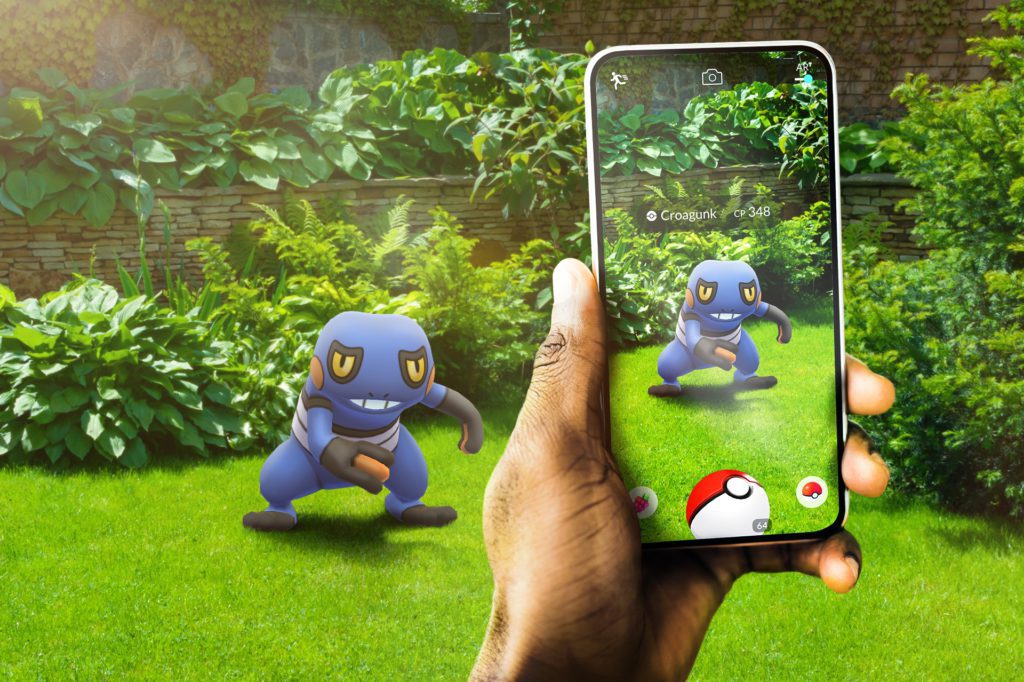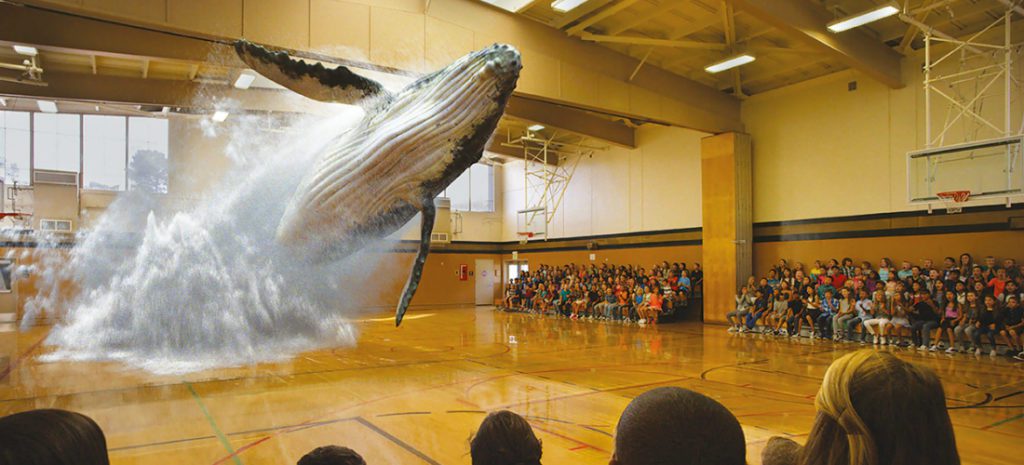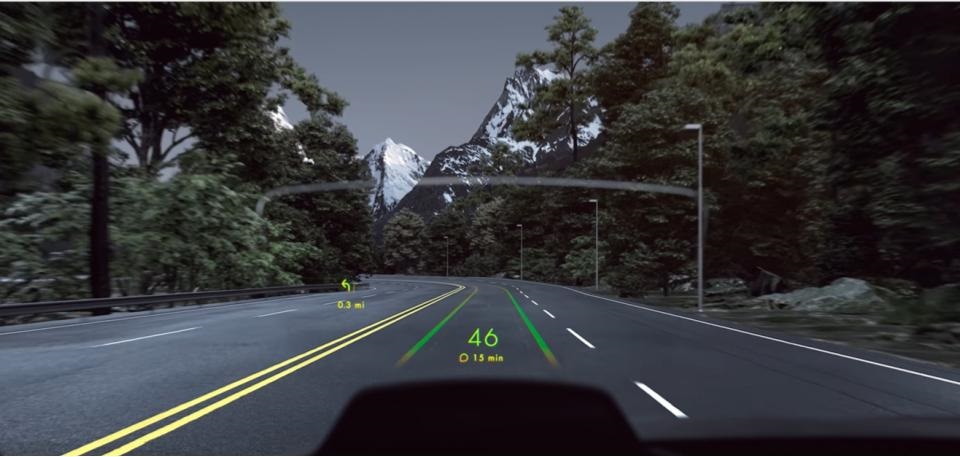Augmented Reality (AR) is a technology that allows users to interact with computer-generated perceptual information in the real world. It improves the sensory experience of people in a Dimensional Digital World by adding virtual interactive elements to real-world items. The majority of AR consumers are between the ages of 16 and 34, with 73% reporting to be very satisfied with their mobile AR experiences.
The Augmented Reality market is disrupting industries and estimated to grow from $10.7 billion in 2019 to over $72.7 billion by 2024 according to a study by Google. The augmented reality use cases are endless and the technology can provide consumers with unique experiences, better product interaction, improved business efficiency, and even help them achieve their fitness goals. Let’s explore the top verticals.
Gaming Industry
AR is useful in real-time strategy games as it adds an overlay to the game’s map which allows players to plan attacks on enemies all while checking out their surroundings for resources needed to make buildings and other items that contribute towards gamers’ overall progress.
Pokemon Go

The game uses 3D graphics of virtual creatures (Pokémon) to provide a more immersive experience. The game detects, captures, battles, and trains Pokémon in the real world using the player’s mobile device GPS.
Retail Sector
How about trying on clothes without even going into a fitting room? Or getting an up-close view of your car before you purchase it? If this sounds interesting, augmented reality is the way to go.
AR can be used for more than making sure that a product fits into your home or car. It also includes providing an instruction manual on how to use it properly and efficiently. This will give users greater control over their new products without having to search through user manuals online as they would still need access to them in case of emergency.
Fitness Industry
The pandemic was a game-changer for the fitness business, upending gym operations and moving exercises from the outside to the inside. Sales in-home fitness equipment increased to $2.3 billion, with smart bikes, smart mirrors, wearables, and other home workout equipment becoming popular.
Schools and gyms are gradually reopening as vaccinations continue to progress and lockdowns decrease in many areas. Some people will continue to work out from home, but many individuals will miss the social aspects of exercise in real places. FitTech’s success after the epidemic will allow individuals to do both. It’s feasible to livestream and workout with others virtually while remaining safely and conveniently at home using AR.
PhotonLens

PhotonLens is developing AR headsets for a variety of fitness applications, including boxing, ping pong, and yoga. These apps provide opportunities for interaction with celebrity trainers, safe immersion in active gaming settings, and most importantly, gamification of your fitness regimen. Our PhotonLenses are serious about gamification; our team consists of former mobile game company CEOs.
People are more likely to form habits of activities they like and that we become bored with quickly, according to neuroscience research. According to studies, 44% of inactive people don’t exercise because it isn’t enjoyable.
The stakes for promoting fitness have never been higher: studies indicate that people engaged in 32% less physical activity during the epidemic, and that obesity rates among youngsters rose as activity levels decreased. Fittech has previously attempted to replicate or educate you on what you’re doing (treadmills, for example).
These gadgets, on the other hand, make exercise more convenient and enjoyable. They don’t, however, substantially improve the experience.
Entertainment & Education Industry

AR can be used in virtual museums or augmented reality tours of popular spots to provide users with information on the history and culture behind different landmarks. This allows people from across the world who may not have an opportunity to visit these locations a chance to see them through augmented reality. It also gives individuals, especially children, new opportunities for learning as they explore their surroundings while studying geography and history at school or home. Augmented Reality provides opportunities for entertainment purposes such as playing augmented musical instruments that allow you to try out your skills without buying expensive equipment.
There are several AR apps designed specifically for this purpose including The Layar augmented piano which lets you play songs by hitting virtual keys displayed over physical pianos found in malls or public spaces.
Education can also benefit from augmented reality as it provides opportunities for learning while traveling or allowing people who may be experiencing a medical condition to learn more about their ailment without the worry of feeling ashamed in front of other individuals. It allows users to explore different augmented experiences that allow them to better understand and diagnose possible problems with family members, friends, or even themselves.
Both on-campus and off-campuses, schools, and institutions utilize augmented reality to complement traditional courses and add interactivity. The following is a list of augmented reality software for education:
- Human Anatomy Atlas 2021 3D models and simulations of male and female bodies teach students and healthcare professionals about human anatomy. Users can perform a variety of tasks such as virtual dissections, view animations, and examine muscular movement.
- Holo-Human The Human Anatomy AR app allows users to explore human anatomy models, such as internal and 360-degree views, in a collaborative setting. Teachers can also develop course materials.
- VR Frog Dissection: Ribbit-ing Discoveries Frogs are dissected in biology classes all over the world to learn about anatomy. This app replaces this practice by providing a fully immersive experience through which teachers and pupils may study the frog’s anatomy via virtual dissection.
- GeoGebra Augmented Reality This engaging tool promotes scientific, technological, engineering, and mathematical (STEM) education through AR features that allow pupils to visualize forms and 3D functions; employ critical thinking skills; and more.
- Expeditions This powerful program allows instructors and pupils to build and explore realistic, virtual environments with hundreds of AR tours.
The augmented reality use cases are endless! AR has made its way into several industries including entertainment, retail, fitness, education, and many others which have provided consumers with new augmented experiences they would not normally get at home on their smartphones or tablets unless using an app like Layar Reality Browser designed specifically for this purpose. AR provides opportunities to take entertainment and education to the next level!
Transportation
Augmented reality is moving the transportation industry to a whole new level with features such as 3D navigation, driving directions, and images of terrains. AR technically has the ability to project information on any surface.
WayRay Navion
WayRay’s Navion technology projects navigational instructions on the windshield using a holographic optical element to create a genuine AR experience without the need for specialized eyewear or headgear.
AeroGlass
The display of Aero Glass AR headsets shows VFR (Visual Flight Rules) navigation for airports, cities, villages, airspace, and terrains. It’s a fantastic tool for pilots planning landing approaches, especially when clouds or fog obscure visibility. Visual indicators also assist in providing a clearer picture than audible instructions.
Use Cases for Augmented Reality in Marketing
Marketers are employing AR-based strategies to enhance the companies’ status among customers. AR is not only enabling businesses to increase customer interaction, but it’s also allowing them to reach out to a wider audience with their products.
AirWalk
In a campaign to promote the relaunch of limited-edition Jim shoes, Airwalk used geolocation (an AR feature) to create invisible pop-up shops.
Stubhub
StubHub debuted an AR function on its mobile app for Super Bowl LII, allowing customers to view a virtual 3D model of the US Bank Stadium.
Pepsi
In 2014, Pepsi launched an augmented reality bus stop campaign to provide passengers with a once-in-a-lifetime experience.
The Future of Augmented Reality
In the future, it’s likely that we’ll experience XR in ways we can’t yet fathom. But, for now, there are several current technology developments to look forward to. We’ll have faster, lighter, and more affordable VR technology. And advancements in smartphone technology (such as better cameras and processors) will allow us to enjoy slicker AR and VR experiences on our phones wherever we go. With 5G wireless networks, we’ll be able to watch them from anywhere in the world.





